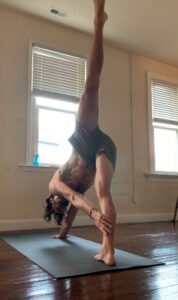The Role of Learning in Yoga: Education vs. Exploitation and the Broken Teacher Training System
The modern yoga industry has shifted away from teaching a practice that once ecnouraged and even required ongoing learning, self-reflection, and personal growth. Instead, the commercial interests have been prioritized over genuine education. This shift has left both students and teachers navigating a system that often exploits their desire to learn and grow. Nowhere is this tension more evident than in the yoga teacher training system, which, while serving as a lifeline for the industry, has become deeply flawed.
The Importance of Lifelong Learning in Yoga
The essence of yoga is continuous evolution. For students, this means approaching each class with curiosity and an open mind, recognizing that there is always more to learn—not just in the mastery of physical postures but in the exploration of the subtler aspects of yoga. For teachers, this process is equally critical. The role of a yoga teacher extends beyond simply instructing; it involves guiding students on a path of personal discovery, which requires a deep and continually replenished well of knowledge.
Lifelong learning in yoga is not just about acquiring new techniques or memorizing sequences. It’s about cultivating an inquisitive mind and a willingness to explore the deeper dimensions of yoga philosophy, ethics, and practice. Teachers must embrace this journey themselves, constantly seeking new ways to inspire and support their students.
Yet, this ideal of ongoing education is not always prioritized in the modern yoga landscape. Instead, many studios are driven by profit, focusing more on selling memberships and quick certifications than fostering meaningful learning. This commercialization undermines the very principles that make yoga a transformative practice.
Exploitation in the Name of Education
In many modern yoga studios, education has been overshadowed by the need to retain paying customers. Membership-driven models prioritize retaining students through subscription systems rather than supporting their authentic growth. In these environments, students are often viewed as consumers rather than individuals on a learning journey. The emphasis shifts from deep, transformative practices to classes that cater to popular demand—often fitness-oriented sessions that prioritize physicality over mindfulness.
This transactional approach also impacts teacher training programs, which have become more about generating revenue than creating skilled, knowledgeable teachers. Studios may offer teacher training as a primary source of income, promising quick certification rather than a deep and meaningful education. While some programs provide personal transformation, many churn out new teachers who are not fully prepared for the challenges of leading classes or fostering the growth of their students.
The Broken System of Teacher Training
Teacher training programs were initially designed to spread yoga and pass on its traditions, but they have become a crutch for the industry, with financial incentives often taking precedence over the quality of education. At the center of this issue is the Yoga Alliance, an organization that registers teacher training programs but has become a gatekeeper rather than a true advocate for teachers. Yoga Alliance-certified programs can meet minimal requirements, often just 200 hours of instruction, to be deemed sufficient for certification, even if the actual education provided lacks depth or rigor.
This commodification of certification has led to an oversaturation of the market, with hundreds of thousands of newly certified teachers competing for a limited number of teaching positions. The system prioritizes quantity over quality, leaving many teachers without the skills they need to succeed in the industry. As a result, many yoga teachers face job insecurity, low wages, and limited opportunities for professional growth.
The Need for Reform: A Path Forward
For the yoga industry to realign with its educational roots, significant reforms are necessary—especially in teacher training. First, there must be a shift from mass certification toward multi-tiered, ongoing education. Teacher training should not be seen as a one-time event but as the beginning of a longer journey. Studios should implement structured mentorship programs where new teachers can assist more experienced instructors, gaining practical experience and refining their skills over time.
High-end industries, such as salons, have successfully adopted apprenticeship models that allow for gradual professional development. Yoga could benefit from a similar approach, where new teachers are supported by mentors and are given opportunities to grow rather than being thrust into teaching positions with minimal preparation.
Additionally, Yoga Alliance needs to adopt more stringent evaluation processes that focus on the quality of education provided, not just the number of hours completed. By prioritizing depth of knowledge and teaching ability over certification quotas, the industry can ensure that the next generation of yoga teachers is better prepared to succeed.
Creating Truly Educational Yoga Environments
Studios must also take responsibility for creating spaces where learning, rather than profit, is the priority. This means offering smaller, more focused classes where students can receive personalized attention and guidance. Workshops and courses that dive into the philosophy, anatomy, and meditative aspects of yoga should be an integral part of a studio’s offerings, helping students to expand their understanding of the practice beyond the physical postures.
For teachers, continuing education should be encouraged and supported. Studios can offer professional development opportunities and mentorship programs to ensure that instructors continue to deepen their knowledge. Teachers who are committed to their own learning are better equipped to guide their students through the complexities of yoga, creating an environment of growth for all.
Finally, fostering an atmosphere of non-competition is essential. In yoga, learning is deeply personal, and every student’s path is unique. By creating supportive, non-competitive spaces, studios can encourage students to focus on their own progress rather than comparing themselves to others. This mindset shift helps maintain yoga’s integrity as a practice rooted in personal transformation.
Conclusion: Realigning Yoga with Its Educational Foundations
Yoga has always been, at its heart, an educational practice—one that invites students and teachers alike to engage in lifelong learning. However, the commercialization of yoga and the exploitation of teacher training programs have compromised this ideal. If we want to preserve the integrity of yoga, we must resist the urge to turn it into a commodity and instead focus on fostering meaningful educational environments. By reforming teacher training, supporting ongoing learning, and creating spaces that prioritize personal growth over profit, the yoga industry can return to its roots and offer the depth, connection, and transformation that yoga promises.







